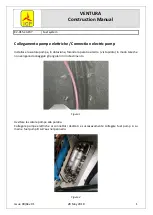
F
F
L
L
I
I
G
G
H
H
T
T
T
T
R
R
A
A
I
I
N
N
I
I
N
N
G
G
S
S
U
U
P
P
P
P
L
L
E
E
M
M
E
E
N
N
T
T
for SPORT
STAR
Light Sport Aircraft
Document No.: S2006FTSUS Revision: -
Date of Issue: 15/01/2006
Page:
109/130
4.18 Stalls
4.18.1 Safety considerations – Pre-stall Check
1. HEIGHT…..adequate to allow recovery by 2000 ft AGL. Typical
altitude lost in recovery seldom exceeds 200 ft so plan accordingly.
2. AREA…..use a suitable practice area. This does not include
anywhere near an airfield or traffic circuit. If the training area is
heavily used and there is a common frequency transmit intentions
to other aircraft in the area.
3. SECURITY…..ensure loose articles secure, harness tight, canopy
locked and windows closed.
4. ENGINE…..temperatures
and
pressures in the green, prop pitch
full fine.
5. LOOKOUT…..do a couple of clearing turns to ensure no other
aircraft are in the vicinity. Look below your altitude too.
4.18.2 Level
Power-off
Stalls
As you are doing your clearing turns (last item in the pre-stall check)
reduce the throttle so that your speed drops to about 55-60 KIAS, 100-110
km/h, 65-70 mph. This will allow you to get into the manoeuvre right away
rather than wait while you slow down after rolling out of the turn. Once you
are straight and level, set the flap configuration and reduce the throttle to
idle. Retrim. To remain level you will have to slowly pull back on the stick
and as soon as you do that the airspeed will decrease. Try to keep the
stick neutral with respect to the ailerons and keep the ball in the centre. If
one wing wants to drop try to stop it with opposite RUDDER, not aileron. If
you have some aileron input in at the stall point, the other wing will drop
first ie small right aileron input, left wing will drop, and vice versa. The
slower you get the more you will have to pull back on the stick, even to the
point that the stick is all the way back, and it happens fairly quickly so be
prepared to pull all the way. The nose attitude will be abnormally high.
As you approach the stall point you will feel a “burble” in the controls and
this is the result of the airflow over the wing beginning to detach from the
wing surface and change from laminar (smooth) flow to turbulent flow. The
controls will be very sloppy. At the stall point the nose will fall and the
















































